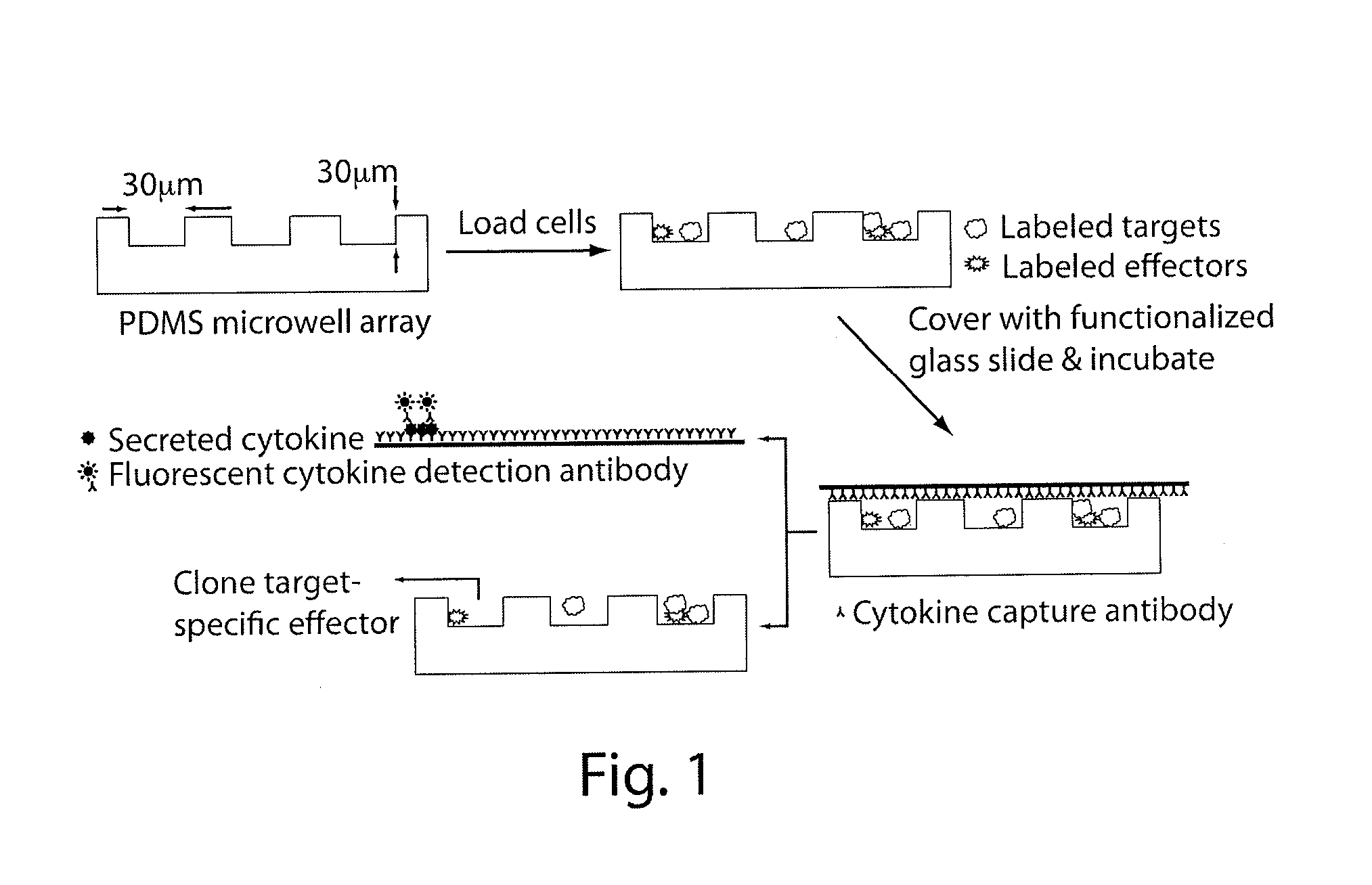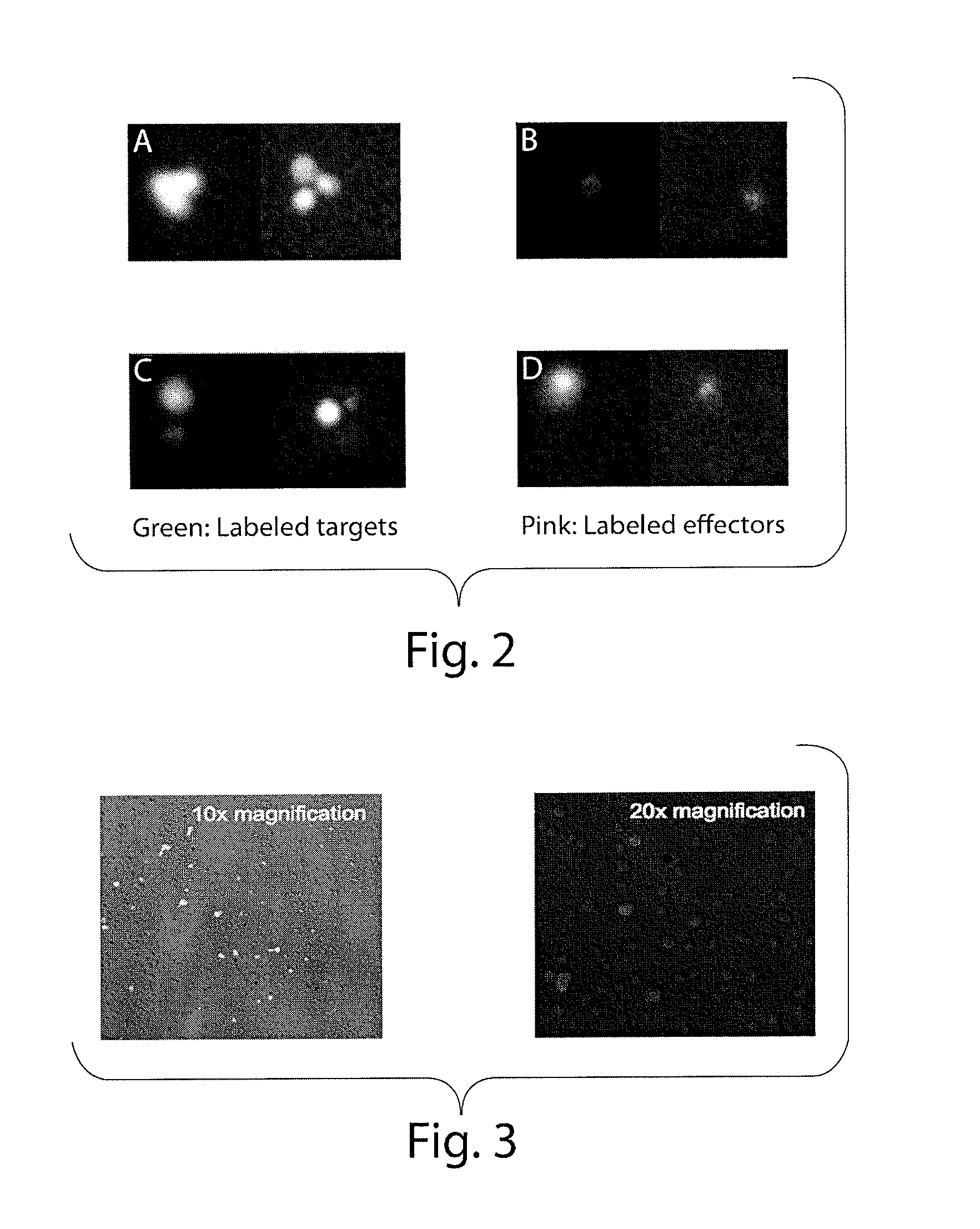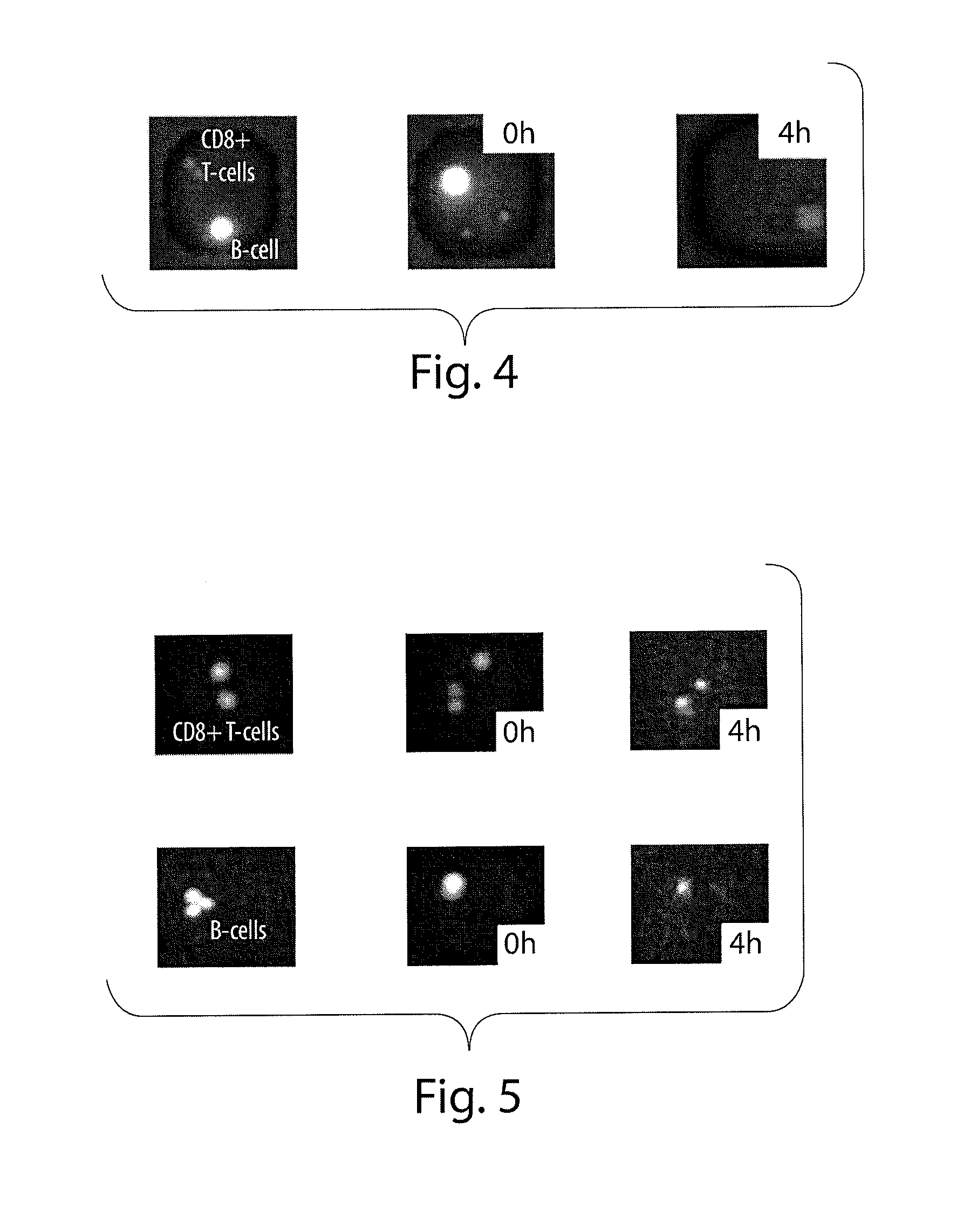Compositions And Methods For Assessing Cytotoxicity Of Single Cells
a single cell and cytotoxicity technology, applied in the field of single cell cytotoxicity compositions and methods, can solve the problems of poor sensitivity for rare events, insufficient definition of existing analytical tools, and inability to evaluate the human immune response to hiv with sufficient clarity to determine the correlate of protection
- Summary
- Abstract
- Description
- Claims
- Application Information
AI Technical Summary
Benefits of technology
Problems solved by technology
Method used
Image
Examples
example 1
Development of a High-Throughput Assay for Assessing the Cytolytic Activity of Single Cells
[0036]Studies have previously described a high-throughput assay to functionally characterize large numbers of primary cells by loading single cells in picoliter microwells (˜2×105 per microarray, each well ˜30 μm diameter) (Bradshaw E M et al. (2008) Concurrent detection of secreted products from human lymphocytes by microengraving: cytokines and antigen-reactive antibodies. Clin. Immunol. 129(1), 10; Love J C et al. (2006) A microengraving method for rapid selection of single cells producing antigen-specific antibodies. Nat. Biotech. 24(6), 703). The loaded microwells are held in physical contact with glass slides pre-functionalized with the appropriate reagents (for example anti-IL-2 capture antibody coated onto poly-lysine slides) and incubated for 2 h to capture the secreted cytokines. The slides are then processed and tagged with the appropriate detection antibodies to reveal fluorescent ...
example 2
Identification and Isolation of CTLs Specific for HIV-Infected CD4+ T Cells Via their Ability to Lyse the Target Cells and Detect Secreted Mediators of these CTLs
[0048]Once the optimal conditions for the identification of low-frequency cells has been established, microwell assay is used to identify CTLs that are able to lyse HIV-infected autologous CD4+ T cells. The initial strategy uses CD4+ T cells infected with GFP-expressing recombinant viruses to specifically visualize the preferential killing. Flow-cytometric sorting on GFP fluorescence would also ensure a homogeneous viral infected CD4+ target population. Recent studies have evaluated GFP+NL4-3-derived HIV variants for infectivity, replicative capacity, and GFP signal intensity with promising results. CD4 T-cells show a distinct green fluorescence signal when infected with these GFP-expressing strains (FIG. 3). Purifying infected CD4 cells by cell sorting guarantees a homogeneous target population.
Detect Secreted Mediators of...
example 3
Differences in CTLs Between Disease Progressors and Long-Term Non-Progressors (LTNPS) Measured by their Ability to Secrete Soluble Mediators and the Ability to Effect Lysis
[0051]This research aims to quantify and compare the Cytotoxic T Lymphocyte (CTL) responses to HIV-infected CD4+ T cells, both, by their ability to lyse their targets and by their ability to secrete cytokines. The approach is based on the recently developed high-throughput screening methodology to profile large numbers of single cells in microarrays and is applied to analyze interactions between pairs of target and effector cells.
Compare and Quantify the Differences in CTLs
[0052]The invention provides for the ability to quantify differences between individual target specific CTLs in large populations of progressors, LTNPs, infected individuals on HAART, and chronically infected individuals. For example, although a significant difference in perforin expression and proliferation of HIV-specific CTLs in LTNPs and pro...
PUM
| Property | Measurement | Unit |
|---|---|---|
| diameter | aaaaa | aaaaa |
| size | aaaaa | aaaaa |
| size | aaaaa | aaaaa |
Abstract
Description
Claims
Application Information
 Login to View More
Login to View More - R&D
- Intellectual Property
- Life Sciences
- Materials
- Tech Scout
- Unparalleled Data Quality
- Higher Quality Content
- 60% Fewer Hallucinations
Browse by: Latest US Patents, China's latest patents, Technical Efficacy Thesaurus, Application Domain, Technology Topic, Popular Technical Reports.
© 2025 PatSnap. All rights reserved.Legal|Privacy policy|Modern Slavery Act Transparency Statement|Sitemap|About US| Contact US: help@patsnap.com



